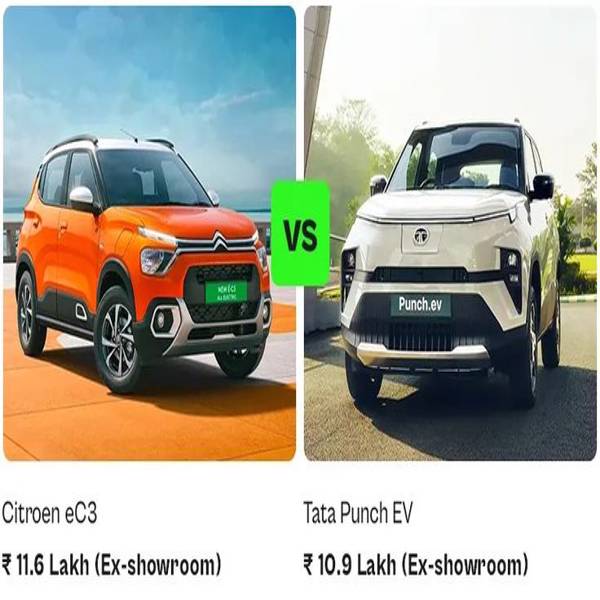Punch vs. eC3: City Champs Battle for Real-World Range Crown
Two city electric SUVs, the Tata Punch EV, and Citroen eC3, might look similar but have big differences. Both are small, raised electric vehicles with rugged styling. But their inner workings are quite distinct. The Punch EV offers two battery sizes (long and standard range) while the eC3 has one. The Punch EV is also more powerful, with almost double the horsepower and more torque than the eC3.
Despite the size difference, both might offer a similar real-world range, which we’ll explore next.
Specs on paper favor the Punch EV, but real-world performance is another story.
Official range estimates (ARAI) show the Punch EV Long Range going further (421km) compared to the eC3 (320km). The eC3 uses a simpler regenerative braking system with one setting, while the Punch EV offers more control with adjustable levels via steering wheel paddles. The test on the Punch EV used the middle setting (level 2) for a balanced city and highway experience. The eC3 is slightly lighter (1,316kg) than the Punch EV (1,360kg).
Despite these advantages for the Punch EV on paper, how will they perform in actual driving conditions? We’ll be sure to find out next.
Real-world range test: Surprise results!
We tested both EVs with full charges, driving them on city and highway roads with driver changes along the way. The results were surprising!
The Punch EV achieved a real-world range of 229km, translating to an efficiency of 6.54 kilometers per kilowatt-hour (kWh).
Despite having a smaller battery on paper, the Citroen eC3 managed a similar range of 228km with a much better efficiency of 7.8km/kWh.
It’s worth noting that both cars faced hot weather (around 40 degrees Celsius), forcing the air conditioning to work hard and potentially impacting the range.
With its bigger battery, the Punch EV surprisingly only delivered 1km more range than the eC3 in similar conditions. This might be because the Punch EV is peppier, even in Eco mode than the more relaxed eC3.
Charging options differ slightly:
- Punch EV offers a slower 3.3kW AC charger or a faster 7.2kW option.
- The eC3 sticks with a single 3.3kW AC charger.
- Both can utilize DC fast charging for quicker top-ups on the go.
- The Citroen eC3 costs between Rs 11.61 lakh and Rs 13.35 lakh.
- The Tata Punch EV has a wider price range of Rs 10.99 to Rs 15.49 lakh.
Why choose which:
- The Punch EV’s higher price reflects its more powerful engine, longer feature list, and a wider range of trims.
- Despite the Punch EV’s advantages on paper, both cars offer similar practicality for pure city driving.
Also read : BMW M3 roars back with power boost and design refresh.
In short, the Punch EV caters to those who want performance and features, while the eC3 might be a good choice for budget-minded city commuters.



